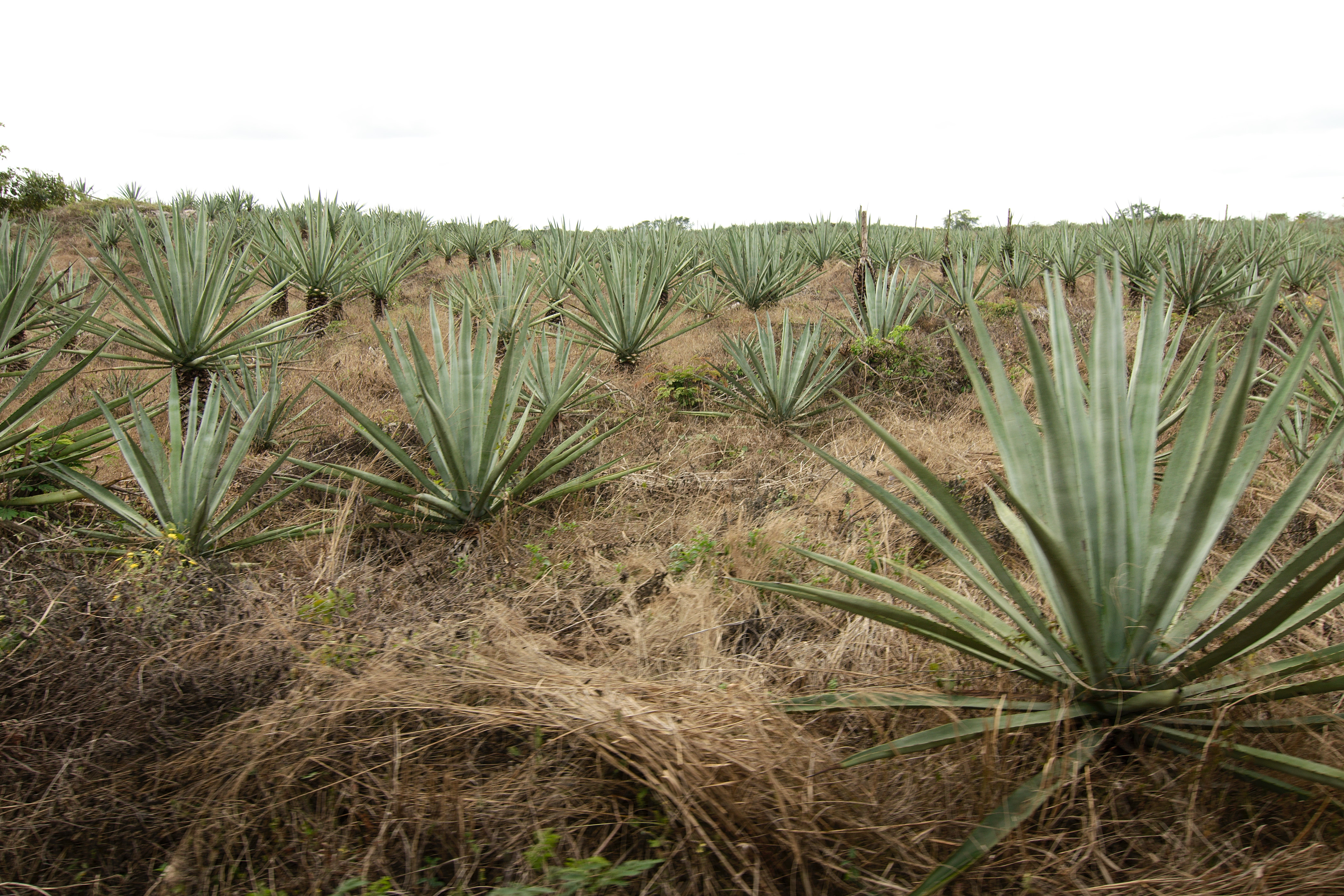Henequen
(Agave fourcroydes)

Description
Henequen (Agave fourcroydes Lem.) is an agave, a plant species native to southern Mexico and Guatemala. It is reportedly naturalized in Italy, the Canary Islands, Costa Rica, Cuba, Hispaniola, the Cayman Islands and the Lesser Antilles. The leaves of Agave fourcroydes yield a fiber also called henequen, which is suitable for rope and twine but not of as high a quality as sisal. It is the major plantation fiber agave of eastern Mexico, being grown extensively in Yucatán, Veracruz, and Tamaulipas. It is also used to make licor del henequén, a traditional Mexican alcoholic drink. The plant appears as a rosette of sword-shaped leaves 1.2 to 1.8 meters long, growing out of a thick stem that may reach 1.7 meters (5 ft). The leaves have regularly spaced teeth 3-6 mm long and a terminal spine 2-3 cm long. Like sisal, A. fourcroydes is a sterile hybrid; the ovaries never produce seeds. The plant does produce bulbils that may be planted, but commercial growers prefer to use the frequent suckers, which develop more quickly. The first person of Spanish descent to document the plant and its usefulness for ropes and other naval utensils was José María Lanz, a Mexican-born engineer in service of the Spanish Navy, who studied henequen in Yucatán in 1783. Agave is a genus of monocots native to the hot and arid regions of the Americas, although some Agave species are also native to tropical areas of South America. The genus Agave (from the Ancient Greek αγαυή, agauê) is primarily known for its succulent and xerophytic species that typically form large rosettes of strong, fleshy leaves. Agave now includes species formerly placed in a number of other genera, such as Manfreda, ×Mangave, Polianthes and Prochnyanthes. Many plants in this genus may be considered perennial, because they require several to many years to mature and flower. However, most Agave species are more accurately described as monocarpic rosettes or multiannuals, since each individual rosette flowers only once and then dies; a small number of Agave species are polycarpic. Maguey flowers are considered edible in many indigenous culinary traditions of Mesoamerica. Along with plants from the closely related genera Yucca, Hesperoyucca, and Hesperaloe, various Agave species are popular ornamental plants in hot, dry climates, as they require very little supplemental water to survive. Most Agave species grow very slowly. Some Agave species are known by the common name "century plant".
Taxonomic tree:







